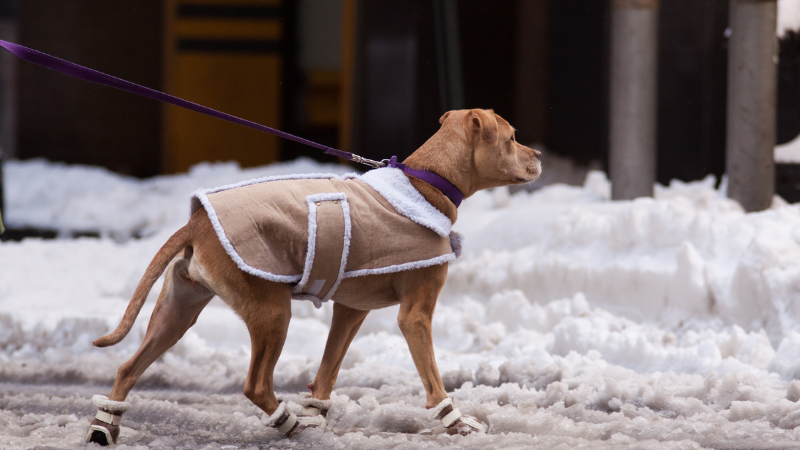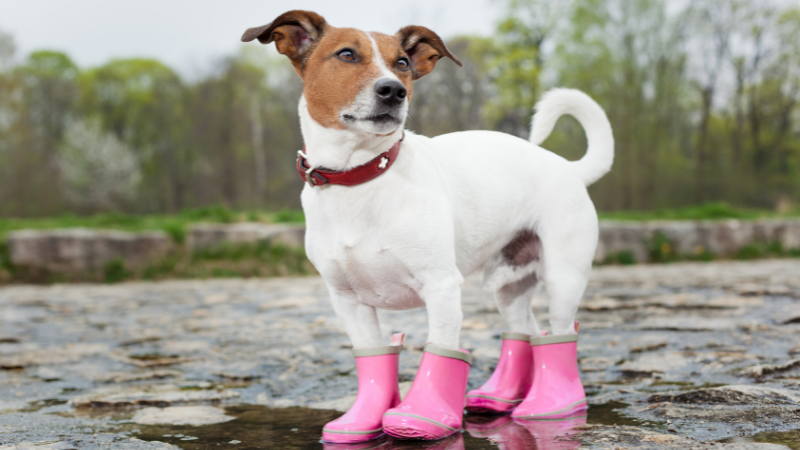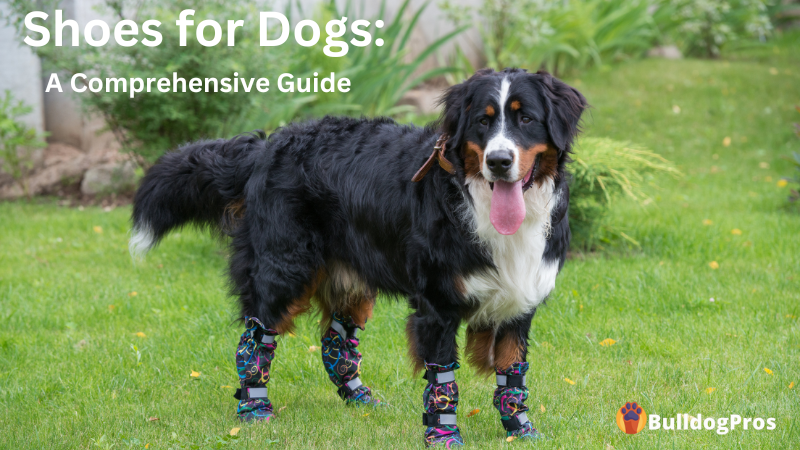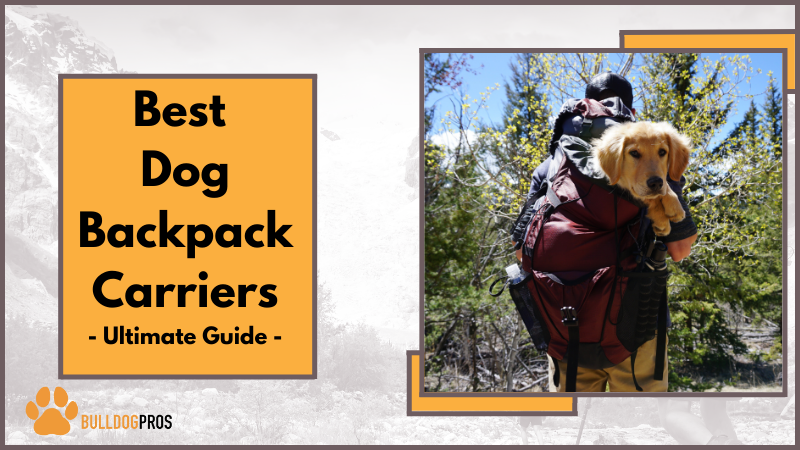As a dog owner, you know how important it is to keep your furry friend happy and healthy. One often overlooked aspect of dog care is protecting their precious paws. Just like humans, dogs can benefit from wearing shoes. In this guide, I’ll walk you through everything you need to know about choosing the perfect shoes for dogs. From understanding the need for dog shoes to factors to consider before purchasing, measuring your dog’s paws, types of dog shoes available, training your dog to wear shoes, and maintenance tips, we’ve got you covered!
Understanding the Need for Dog Shoes

When it comes to dog shoes, there are several compelling reasons why your canine companion may benefit from wearing them. Firstly, dog shoes provide protection from extreme weather conditions. On hot summer days, pavement and sand can become scorching hot, causing painful burns on your dog’s paws. In colder weather, icy and snowy surfaces can be equally harsh. Shoes act as a barrier, shielding their paws from these extreme temperatures.
Additionally, dog shoes offer protection from harmful substances. Chemicals, sharp objects, and debris on the ground can pose a risk to your dog’s paws. Shoes provide a layer of defense, preventing injuries and potential infections.
Furthermore, shoes offer traction and prevent slipping. This is especially beneficial for older dogs or those with mobility issues. The non-slip soles on dog shoes provide grip, ensuring stability and reducing the risk of falls.
Lastly, dog shoes can assist with medical conditions. If your dog has a paw injury, open wound, or allergies, shoes can protect the affected area from further irritation and contamination.
Factors to Consider When Buying Dog Shoes

Before purchasing dog shoes, there are a few important factors to consider. The first and foremost is size and fit. Ill-fitting shoes can cause discomfort and make it challenging for your dog to walk. Measure your dog’s paws carefully and consult the sizing chart provided by the manufacturer to ensure a proper fit.
Material and durability are also crucial. Look for shoes made from high-quality, durable materials that can withstand various terrains and weather conditions. Breathability and comfort are equally important to prevent your dog’s paws from getting too hot and sweaty.
Ensure that the shoes are easy to put on and take off. Adjustable straps and closures make the process hassle-free and allow for a secure fit. Non-slip soles with good traction will provide stability and prevent slipping.
Consider whether you need waterproof or weather-resistant shoes based on your dog’s activities and the climate you live in. Having shoes that can withstand rain or snow will keep your dog’s paws dry and comfortable.
How to Measure Your Dog’s Paws for Shoes
Proper measurement of your dog’s paws is essential for finding the right shoes. Start by placing your dog’s paw on a piece of paper and using a pen or pencil to trace around it. Measure the length and width of the tracing, and refer to the manufacturer’s sizing guide to find the appropriate shoe size.
Remember to measure all four paws, as they may differ slightly in size. If your dog’s paws fall between sizes, it’s generally better to choose the larger size for a comfortable fit. Keep in mind that different shoe brands may have variations in their sizing, so it’s always best to refer to the specific manufacturer’s guidelines.
Types of Dog Shoes
When it comes to dog shoes, there are various types available to cater to different needs.
- Boots provide full coverage and maximum protection, making them ideal for rugged terrains and extreme weather conditions.
- Paw wraps are lightweight and breathable options, perfect for indoor use or protecting sensitive paws.
- Socks with grips are great for dogs that have traction issues on smooth surfaces.
- Sandals offer breathability with open-toe designs, suitable for less extreme conditions.
- For dogs with injuries or medical conditions, there are specialized medical shoes designed to provide targeted support and protection.
How to Train Your Dog to Wear Shoes
Introducing shoes to your dog may require some training and patience. Start by letting your dog sniff and inspect the shoes to familiarize themselves with the new item. Gradually, encourage them to place their paws into the shoes and reward them with treats and praise. It’s important to take it slow and make the experience positive for your dog. Training sessions should be short and enjoyable. If your dog shows resistance, try using positive reinforcement techniques and gradually increase the duration of wearing the shoes. With time and practice, your dog will become comfortable wearing their shoes.
Maintaining and Cleaning Dog Shoes
To ensure the longevity of your dog’s shoes, proper maintenance and cleaning are essential. Regularly inspect the shoes for any signs of wear or damage. Clean them according to the manufacturer’s instructions, typically with mild soap and water. Some shoes may be machine washable, while others require handwashing. Allow the shoes to air dry completely before storing them. Proper storage in a cool, dry place will prevent any odors or mold growth.
FAQs
As a dog owner considering shoes for your furry friend, you may have some questions in mind. Here are answers to three frequently asked questions about dog shoes:
Do dogs need shoes for running?
Whether or not dogs need shoes for running depends on several factors. In general, dogs have evolved to have durable paw pads that provide protection and traction. However, there are situations where shoes can be beneficial for running:
Extreme weather, rough terrain, allergies or sensitivities, and medical conditions.
However, it’s important to note that not all dogs will necessarily need shoes for running. Many dogs can handle running on various surfaces without issues. It’s essential to observe your dog’s comfort level, paw condition, and any signs of discomfort during and after running. If your dog seems to be experiencing paw problems or discomfort, consulting with a veterinarian or a professional dog trainer can help determine whether shoes would be beneficial for their specific running needs.
Are dog shoes necessary for all breeds?
While dog shoes can benefit dogs of various breeds, they may be particularly useful for certain situations. Breeds with shorter hair or less natural padding on their paws, such as French Bulldogs, may benefit from the added protection of shoes.
Additionally, dogs living in extreme climates or those frequently exposed to rough terrains can benefit greatly from wearing shoes. However, it’s important to assess your dog’s specific needs and consult with a veterinarian to determine if shoes are necessary.
Can I use regular human shoes for my dog?
It is not recommended to use regular human shoes for your dog. Dogs have different paw structures and walking patterns than humans, and their shoes need to be specifically designed to accommodate their unique needs. Human shoes can be uncomfortable and restrict proper paw movement, potentially leading to discomfort and injury.
Invest in dog-specific shoes that provide the right fit, support, and protection for your furry friend’s paws. It’s always best to choose shoes made explicitly for dogs to ensure their safety and comfort.
Additional Reading
Conclusion
Investing in the perfect pair of shoes for your dog is a small step that can make a big difference in their overall well-being. By understanding the need for dog shoes, considering important factors before purchasing, measuring your dog’s paws accurately, exploring different types of dog shoes, reviewing top brands, training your dog to wear shoes, and maintaining the shoes properly, you’ll be able to provide your furry friend with the utmost comfort and protection. So, get ready to embark on new adventures with your canine companion, knowing their paws are well taken care of!
Have you used dog shoes on any of your dogs? Please comment below.



